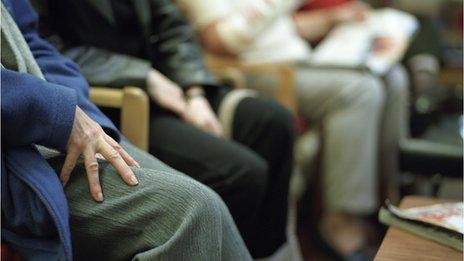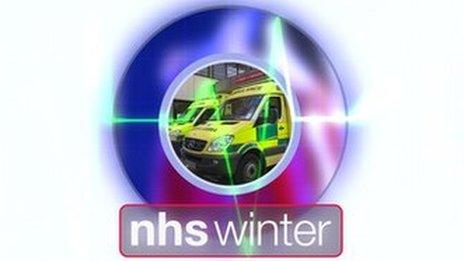NHS Winter 2013-14: Weekly A&E tracker
- Published

Download the data

Notes
Saint Bartholomew's Hospital is missing data for 8 January. This means that figures for the following categories may be revised upwards when all the data is available; ambulances queuing, cancelled operations, beds blocked and bed days lost due to norovirus.
During the holiday period, weeks seven and eight of the tracker, figures were compiled slightly differently by NHS England. This means that week seven is slightly longer than week eight as the data for the 24-26 December was recorded as a single entry, meaning week seven gained a day, and week eight lost a day for the following categories of information; ambulances queuing, cancelled operations, beds blocked and bed days lost due to norovirus.
In week six of the tracker, Southend University Hospital NHS Foundation Trust was unable to provide the weekly figures for some of the data, so we have used an average from the last five weeks for: Patients seen in 4 hours, Attendance at A&E, Emergency admissions, People who waited more than 4 hours to be admitted and Trolley wait between 4 and 12 hours. We will update with the latest figures when they are available.
Chase Farm Hospital, part of the Barnet and Chase Farm Hospitals NHS Trust, no longer has an Accident and Emergency department, external. The data for the trust now only relates to Barnet Hospital.
The Princess Royal University Hospital (PRUH), Bromley, is now part of the King's College Hospital NHS Foundation Trust. We will be adding the PRUH to the search, but to see data for the trust in the meantime please enter the postcode: SE5 9RS.
Produced by Dominic Bailey, Ransome Mpini, Charlotte Thornton, John Walton, Chris Ashton
- Published28 March 2014

- Published21 November 2013

